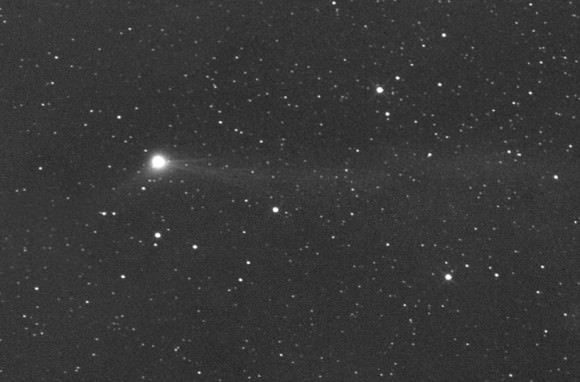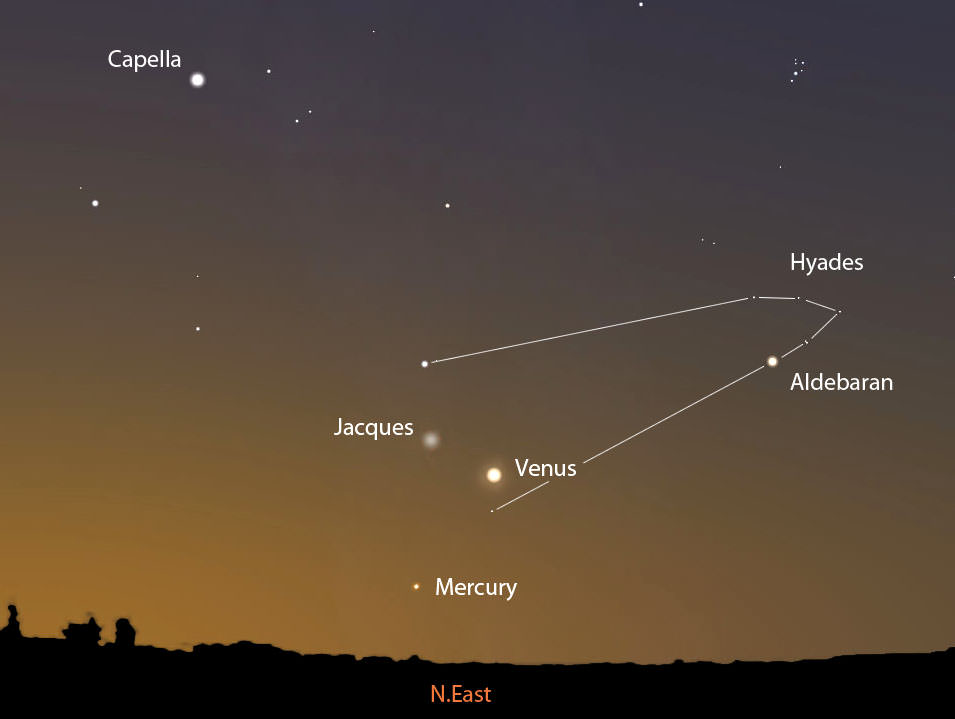Comet C/2014 E2 Jacques has returned! Before it disappeared in the solar glow this spring, the comet reached magnitude +6, the naked eye limit. Now it’s back at dawn, rising higher each morning as it treks toward darker skies. Just days after its July 2 perihelion, the fuzzball will be in conjunction with the planet Venus tomorrow morning July 13. With Mercury nearby, you may have the chance to see this celestial ‘Rat Pack’ tucked within a 8° circle.

While I can guarantee you’ll see Venus and probably Mercury (especially if you use binoculars), morning twilight and low altitude will undoubtedly make spotting Comet Jacques challenging. A 6-inch telescope might nail it. Look for a small, fuzzy cloud with a brighter core against the bluing sky. Patience is the sky observer’s most useful tool. It won’t be long before the comet’s westward motion combined with the seasonal drift of the stars will loft it into darkness again.

A week from now, when the moon’s slimmed to half, the comet will be nearly twice as high and should be easily visible in 50mm binoculars at the start of morning twilight.
Comet Jacques is expected to remain around magnitude +6 through the remainder of July into early August and then slowly fade. It will be well-placed in Perseus at the time of the Perseid meteor shower on Aug. 12-13. Closest approach to Earth occurs on August 29 at 52.4 million miles (84.3 million km). Good luck and let us know if you see it.


Well worth getting up for! (I’m usually up just before dawn anyway) As Mr. Sol has been co-operating with occasional energetic blasts, we can hope one of these hits C. Jacques and it lights up BIG TIME!